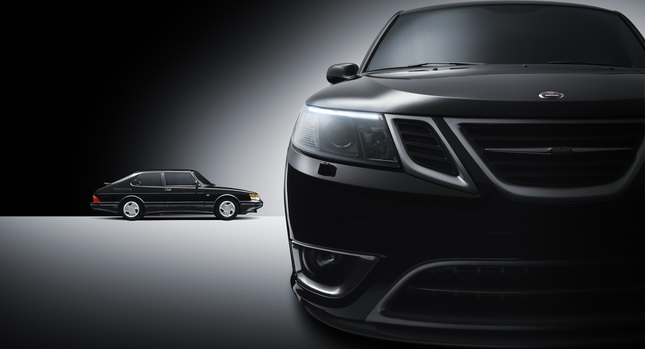It is sad news for the automotive world to learn of the demise of a company. Unfortunately, Monday December 19, will mark the end of the road for Swedish carmaker Saab – and this time it looks like it is final.
Earlier this morning, Swedish Automotive N.V. (Swan) announced that Saab Automobile, Saab Automobile Tools and Saab Powertrain filed for bankruptcy with the District Court in Vanersborg, Sweden.
 This comes after Youngman, the Chinese company which last week promised to pay for the carmaker’s restructuring, informed Saab that it cannot provide the funding necessary for the continuation of the process.
This comes after Youngman, the Chinese company which last week promised to pay for the carmaker’s restructuring, informed Saab that it cannot provide the funding necessary for the continuation of the process.
Therefore, Swan concluded that, with GM vetoing any proposed plan until now, and without the essential funding, it would be insolvent. Thus, it was better for its creditors to file for bankruptcy.
Saab expects its request to be approved by the Vanersborg District Court, which will then appoint receivers who will oversee the closure of the carmaker.
The Svenska Aeroplan Aktiebolaget, which stands for Swedish Aeroplane Limited, was founded in Trollhättan, Sweden in 1947 as the car manufacturing division of the SAAB aircraft manufacturer.
Its first-ever prototype, the 92001, stood out because its drag coefficient of 0.30 was the lowest of any car produced at the time. Although its development started three years before the official formation of the company, the car eventually entered production in 1949 as the Saab 92.
Although subsequent models followed, they were all based on the 92. Its second all-new car, the 99, came a full 19 years later and introduced many elements that would become the company’s trademarks like the wraparound screen and the “hockey stick” profile.
The Swedish carmaker, which by now had merged with commercial vehicle manufacturer Scania-Vabis to become Saab-Scania AB, agreed with Fiat in 1978 to sell a rebadge Lancia Delta as the Saab 600. The most important part of the agreement, though, was a jointly developed platform that would eventually underpin the Saab 9000, the Alfa Romeo 164, the Lancia Thema and the Fiat Croma sedans.
In 1978, Saab also launched what would become its best-selling model, the 99-replacing 900 which sold over a million units.
A decade later, in 1989, Saab’s car division was separated from the aircraft company, with General Motors acquiring half of the newly founded car company’s shares.
GM’s German brand Opel “donated” its Vectra platform for the second-generation 900 that was launched in 1994. Three years later, the outdated 9000 was replaced by the 9-5 on Saab’s 50th anniversary.
Then GM acquired the rest of the company in 2000. The first signs were not encouraging as GM resorted to badge engineering. The Subaru Impreza became the Saab 9-2 and the Chevrolet Trailblazer the Saab 9-7X SUV.
Unsurprisingly, both models didn’t sit well with buyers nor the press and were discontinued. Cancelling the eight-year old 9-5’s replacement in 2005 and delaying the launch of the 9-3 estate by three years were not exactly wise moves, either.
When General Motors filed for Chapter 11 bankruptcy in 2009, Saab was put up for sale. A deal with Swedish supercar maker, Koenigsegg, collapsed, and GM announced that it would close down the brand in 2010 if there were no buyers.
On January 2010, GM agreed to sell Saab to another supercar maker, Spyker, and supply platforms, parts and a new SUV called the 9-4X. The new, Epsilon-platform-based 9-5 was launched and a US$47 million loan by the European Investment Bank, which was guaranteed by the Swedish government, were promising a better future.
Alas, it was not to be. Despite CEO Victor Muller selling Spyker to concentrate on Saab, in April 2011, production came to a halt because unpaid suppliers refused to provide parts.
This was the beginning of the end. Workers were left unpaid and threatened with legal action while suppliers did the same, Russian investor’s Vladimir Antonov interest did not come to fruition, as two proposed deals from Chinese automakers Pang Da and Youngman.
Moreover, GM, which remained a shareholder as well as a platform and parts provider, vetoed any deal that involved the Chinese and the transfer of its licensed technology to them.
After 64 years, Saab, which had clinked on to dear life for quite some time, did not survive the battle for its survival.
The irony is that its latest concept was named the Phoenix. Unlike the mythical bird, though, rising from its ashes doesn’t seem an option for Saab.
PHOTO GALLERY























